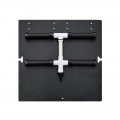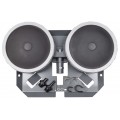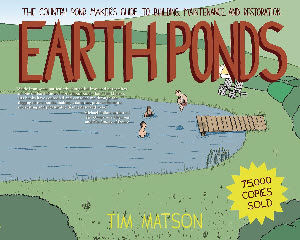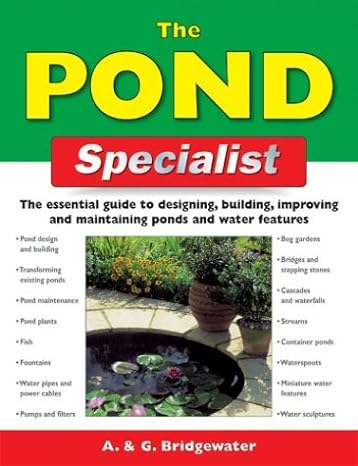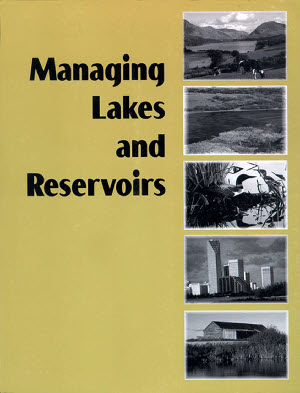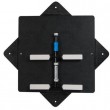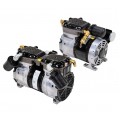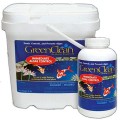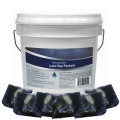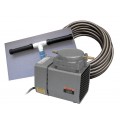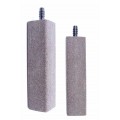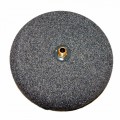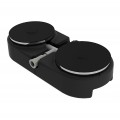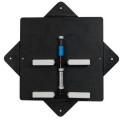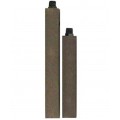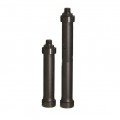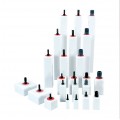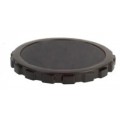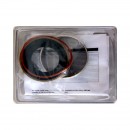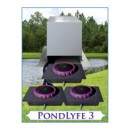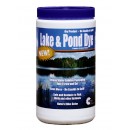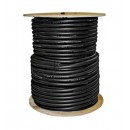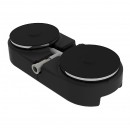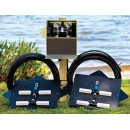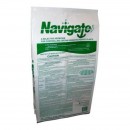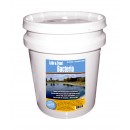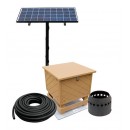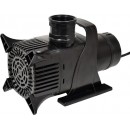Shopping Cart
0 item(s) - $0.00- Pond Sealant
- Aeration Systems
- Air Pumps & Compressors
- Algae Control
- Algaecides & Herbicides
- Bacteria & Clarifiers
- DC Compressors & 12V Pumps
- Diffusers & Airstones
- Dock Bubblers & Deicers
- Dyes & Colorants
- Fountains
- Large Ponds & Lakes
- Muck Removal
- Nozzles & Fountain Heads
- Pond Liner
- Pond Pumps
- Tubing & Accessories
- Water Level Control & Gates
- Water Treatments
- Windmill Aeration
- Commercial & Industrial Supplies
- Solar Aeration
-
Information & Articles
- - Aeration: The Key To Success
- - Air Compressors: Rotary Vane
- - Air Pumps: Linear or Diaphragm
- - Airline & Tubing for Aeration Systems
- - Algae Control
- - Aquatic Plants & Weeds in Ponds
- - Building A Dock Bubbler System
- - Building A Pond: The Basic Steps
- - Calculating Dissolved Oxygen Levels
- - Compost Aeration & Compost Tea
- - Diffusers: The Key To Efficient Aeration
- - Dock Bubblers & Deicers
- - Duckweed Control
- - Fountain For Ponds, Lakes & Small Gardens
- - Grease Trap Bacteria & Enzymes
- - Mosquito Control in Ponds
- - Muck: Removing Sludge & Pond Muck
- - Pond Aeration Systems
- - Pond Dyes: Aesthetics & Growth Control
- - Pond Liners
- - Pond Pumps: Submersible & External
- - Pond Winterization: Prepare Your Pond for Winter
- - Septic Bacteria Treatments
- - Solar Aeration, Solar Pumps & Solar Systems
- - Solar Aerator Parts List
- - Solar DC & 12V Pumps
- - Weeds & Eurasian Milfoil
- - Windmill Aeration & Windmill Pumping
- - Winterization of Ponds and Lakes
- - Beneficial Bacteria: Helping A Pond Naturally
- - Algae: Basics of Pond Algae
- - Oxygen Transfer Rates, SOTR & Pumping Rates of Aeration Systems
- - Pond Weed & Algae Control
- - Questions & Answers
- - Waterfalls: Building a Waterfall
- - Weighted Airhose, Airline & Tubing for Ponds
- - Links to Suppliers & References
- Consultations & Design Assistance
- Books & Guides
- Links & Resources
Diffusers: The Key To Efficient Aeration
|
All bubbles are not created equal; use the right diffuser for your aeration project Of course the heart of any aerator has got to be the compressor, linear air-pump, regenerative blower or windmill bellows but let's not forget to look at the myriad array of diffusers. The diffuser is what breaks up the airflow into bubbles! Big bubbles, small bubbles and even micro-bubbles or ultra fine bubbles all can be used to achieve different results. Just like a home stereo system can sound great through a set of high quality speakers even if the turntable is marginal; so too can a proper diffuser make an old homemade air pump actually create some decent aeration! Maybe they'll last a year or maybe two, but as with any part of the aeration system, whether it is changing the worn out pistons on a Gast compressor or replacing the worn carbon vanes of a Brookwood compressor, a diffuser may need periodic cleaning with muriatic acid. A good diffuser assembly can be a weighted disc system like the Vertex CoActive Air Station with 2 nine inch diffuser discs on a hollow base that can be filled with rocks to keep it on the bottom or a Koenders Airstone which is simply placed in to a bucket with some stones and lowered in to the pond. There are also many knockoffs of high-quality diffusers by companies trying to market a poorly performing copy of a brand name technology in order to garner greater profits. Let's look at some of the different pond diffusers: You want to build a home made diffuser? No you don't...you only think you do! The idea of scrounging through the tool shed for some pits of PVC pipe or hose and some metal jugs or gathering buckets and attempting to fasten a sealed skin from some recycled EPDM membrane might sound like a good idea but it isn't. Sure you can take some SCH 40 pipe and drill some holes in it and cap of the end and epoxy glue a 3/4" NPT air supply connector and make some contraption that will release bubbles but that doesn't mean you will have an efficient diffuser. The best diffuser is one that uses the available airflow and horsepower to maximum efficiency but breaking up the air into bubbles...but not all Bubbles are created equal. I know...it sounds discriminatory but it's the Truth! In most cases you want to have small bubbles and the smaller the better. Ultra-fine bubbles or micro-bubbles as they are sometimes called in the industry are what creates the most efficient aeration.
As the water breaks the surface tension of the pond or lake the oxygen transfer occurs and the water, now with higher levels of vital oxygen, descends back in to the depths where it causes dissolved O2 levels to be higher and higher depending on temperature and barometric pressure among other variables. But that doesn't mean you can just drop an open ended length poly irrigation pipe running in to the pond from the end of a tire pump and expect these basketball sized bubbles to create enough lift to properly aerate...no...it's not that simple because the bubble size also plays an important role in the Gallons Per Minute lifted towards the surface and the important oxygen transfer that occurs between the thin walls of the bubbles themselves as they stream upwards from the diffuser towards the surface. Yes it is a multifaceted process and while it may be sounding too complex there is a simple rule that applies to most pond diffusers.. Smaller bubbles are better bubbles Let's have a brief lesson in fine bubbles, it will be fun (well...not exactly) and you will get a short course in why smaller is sometimes better especially when it comes to diffuser bubbles. Lesson 1 Let's take a fairly large bubble as far as aeration goes. Our large galloping bubble that is 0.8" in diameter, just over 3/4 of an inch, or 20 mm has a full volume of 1.64 cubic inches or 4.19 cubic centimeters. This same glorious orb has a surface area of 5 inches or 12.6 square centimeters and that is what we can define as a coarse bubble! Lesson 2 Now a coarse diffuser like an airstone would create large bubbles like in lesson one but if we could use the same volume of air but break that large sphere into smaller ones we could greatly increase the available surface area which in turn enhances and embellishes the aeration transfer capacity of the same air volume! If we replaced that one large 3/4" wide bubble with tiny bubbles or micro-bubbles that were 1/16 of an inch or 3 mm in diameter we could fit 296 of these fine bubbles into the larger one of lesson 1! The combined surface area of those 296 bubbles works out to over 33 square inches or 84 square centimeters! This is close to 7 times the total surface area...and the surface is where the oxygen transfer occurs. Lesson 3 Now since the surface area is close to 7 times greater we can theoretically aerate 7 times as much water with the same compressor or blower or air pump depending on whether we have a fine bubble diffuser or a coarse bubbler. Same air pump, totally different efficiency!! Diffuser Discs
Practically invisible due to their dark color, these 9 inch membrane discs are engineered for extended performance. The actual disc diffuser bodies are made of high-strength polypropylene with 3/4" MNPT connections to attach to airlines, manifolds or headers. Each diffuser has an average of 6,600 engineered air release orifices, 20% more than some comparable models. The special design of the mat, flexible and supple EPDM membrane, with its proprietary thickness taper, results in full utilization of the membrane surface, even at low airflow operations. This results in improved oxygen transfer efficiency, along with maximum operational flexibility. The disc diffuser has an integral "triple" check valve to prevent fluid backflow. Resistance is about 10" H2O when clean. Made in USA. Note: Diffusers are also known as airstones, these are membrane diffusers with an EPDM fine bubble perforated system. Airstones These are highest-quality ceramic-type air diffusers machined from a solid block of glass-bonded silica. Because dust and dirt particles up to 30 microns in size will pass right through these diffusers, there's no need for expensive air filters. And with an air resistance of less than .25 PSI, these glass-bonded diffusers are compatible with economical low-pressure blowers. They produce a uniform medium/fine bubble and are very resistant to clogging. And when cleaning does become necessary because of a buildup of calcium precipitate or bacteria, an acid bath restores them to like-new performance. Made in USA. With their round grain pore structure, low resistance to airflow, uniform porosity and resistance to clogging, these airstone diffusers are clearly the best diffusers available for general aquaculture aeration. Smaller pores don't necessarily produce smaller bubbles. These diffusers are engineered to produce the smallest bubble possible within the constraints of a reasonable service life. In most soft water applications, they won't need to be cleaned for more than a year. Note that water pH in excess of 9.0 will shorten the diffuser life. Self-weighting when used with typical tubing lengths. Airlift Synergistic Diffusers No need to add sand or rocks in to a hollow base like so many diffusers! These diffusers assemblies need no extra weights! Normal airflow range is 1.5 - 2.4 CFM. Equipped with 5/8" barbed connector. These weighted diffusers lay flat upon the lake or pond bottom so disturbed sediments is minimized and airstones do not become fouled or covered in muck due to the underlay which keeps the airstones out of the sediment. This synergistic diffuser assembly has some of the smallest and finest bubbles available in any diffuser means that you get the most lifting of water column towards the surface and less pressure loss during operation. These diffuser assemblies require less PSI and so are perfect for linear air pumps in most ponds They are also the best choice for deep ponds and lakes and for storm water retention ponds and commercial and industrial aeration. Can also be used with rotary vane compressors, rotary screw pumps and high pressure blowers or piston compressors for a simple and easy aeration system. The flat base has holes for attaching mooring ropes if you wish to add a float to the diffuser for future retrieval or removal or replacing of the diffuser. You can also tie a float a few inches below the surface so you don't have to see the float. The dark color of the sediment-preventing base ensure the diffuser assembly remains invisible. Some of the smallest and finest bubbles available in any diffuser means that you get the most lifting of water column towards the surface and less pressure loss during operation. These diffuser assemblies require less PSI and so are perfect for linear air pumps in most ponds! Can also be used with rotary vane compressors or piston compressors for a simple and easy aeration system. Contact us if you have questions or unsure how many to add to your pond. See other diffusers for small ponds or wastewater. .
Compare Diffusers When comparing aeration systems it is a good idea to look for forums and reviews that discuss the pros and cons of various systems. Since the principals of aeration are scientific and many companies offer products that do basically the same thing to various degrees of efficiency then it is up to us as consumers to use our due-diligence before buying a pond aerator. To compare prices with our recommended systems we have grouped some of the more popular bottom-diffuser aerator brands together for comparison with our best aerator systems.
|
|||||||||||||||||||||||||||||

The Pond Report
Pond Supplies for private pond owners and commercial pond managers.
Pond & lake products and treatments for natural pond care and aquatic management
Fast and free shipping from our Florida, California & Oklahoma Distribution Centers.
ThePondReport.com is a participant in the Amazon Services LLC Associates Program, an affiliate advertising program designed to provide a means for sites to earn advertising fees by advertising and linking to Amazon.com. Read our disclosure policy regarding the affiliations and commercial incentivizations of The Pond Report web site.
© 2006 - 2025

